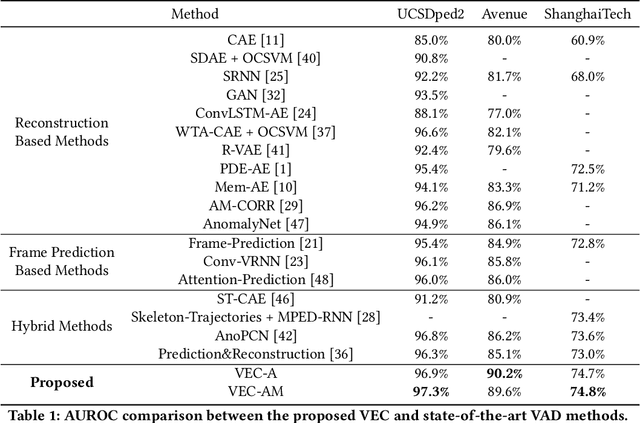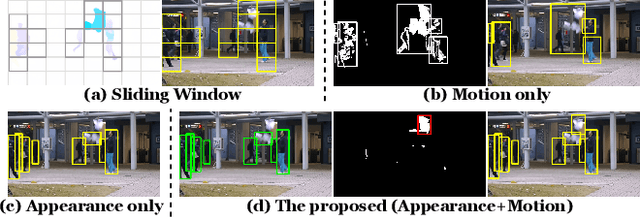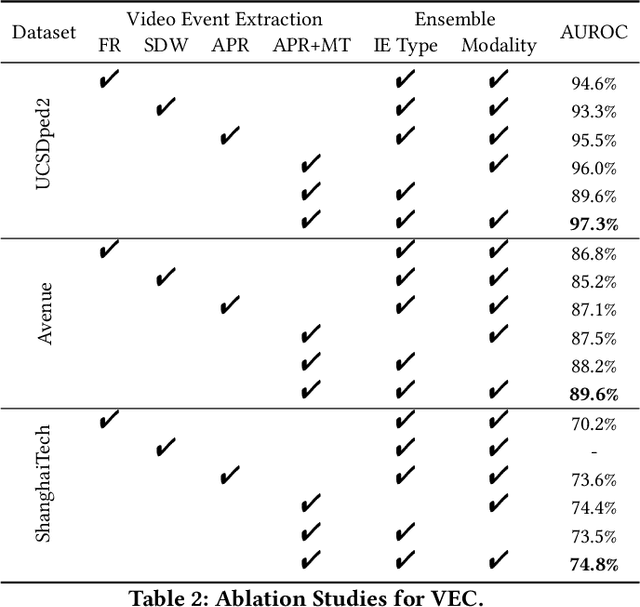Cloze Test Helps: Effective Video Anomaly Detection via Learning to Complete Video Events
Paper and Code
Aug 27, 2020



As a vital topic in media content interpretation, video anomaly detection (VAD) has made fruitful progress via deep neural network (DNN). However, existing methods usually follow a reconstruction or frame prediction routine. They suffer from two gaps: (1) They cannot localize video activities in a both precise and comprehensive manner. (2) They lack sufficient abilities to utilize high-level semantics and temporal context information. Inspired by frequently-used cloze test in language study, we propose a brand-new VAD solution named Video Event Completion (VEC) to bridge gaps above: First, we propose a novel pipeline to achieve both precise and comprehensive enclosure of video activities. Appearance and motion are exploited as mutually complimentary cues to localize regions of interest (RoIs). A normalized spatio-temporal cube (STC) is built from each RoI as a video event, which lays the foundation of VEC and serves as a basic processing unit. Second, we encourage DNN to capture high-level semantics by solving a visual cloze test. To build such a visual cloze test, a certain patch of STC is erased to yield an incomplete event (IE). The DNN learns to restore the original video event from the IE by inferring the missing patch. Third, to incorporate richer motion dynamics, another DNN is trained to infer erased patches' optical flow. Finally, two ensemble strategies using different types of IE and modalities are proposed to boost VAD performance, so as to fully exploit the temporal context and modality information for VAD. VEC can consistently outperform state-of-the-art methods by a notable margin (typically 1.5%-5% AUROC) on commonly-used VAD benchmarks. Our codes and results can be verified at github.com/yuguangnudt/VEC_VAD.
 Add to Chrome
Add to Chrome Add to Firefox
Add to Firefox Add to Edge
Add to Edge